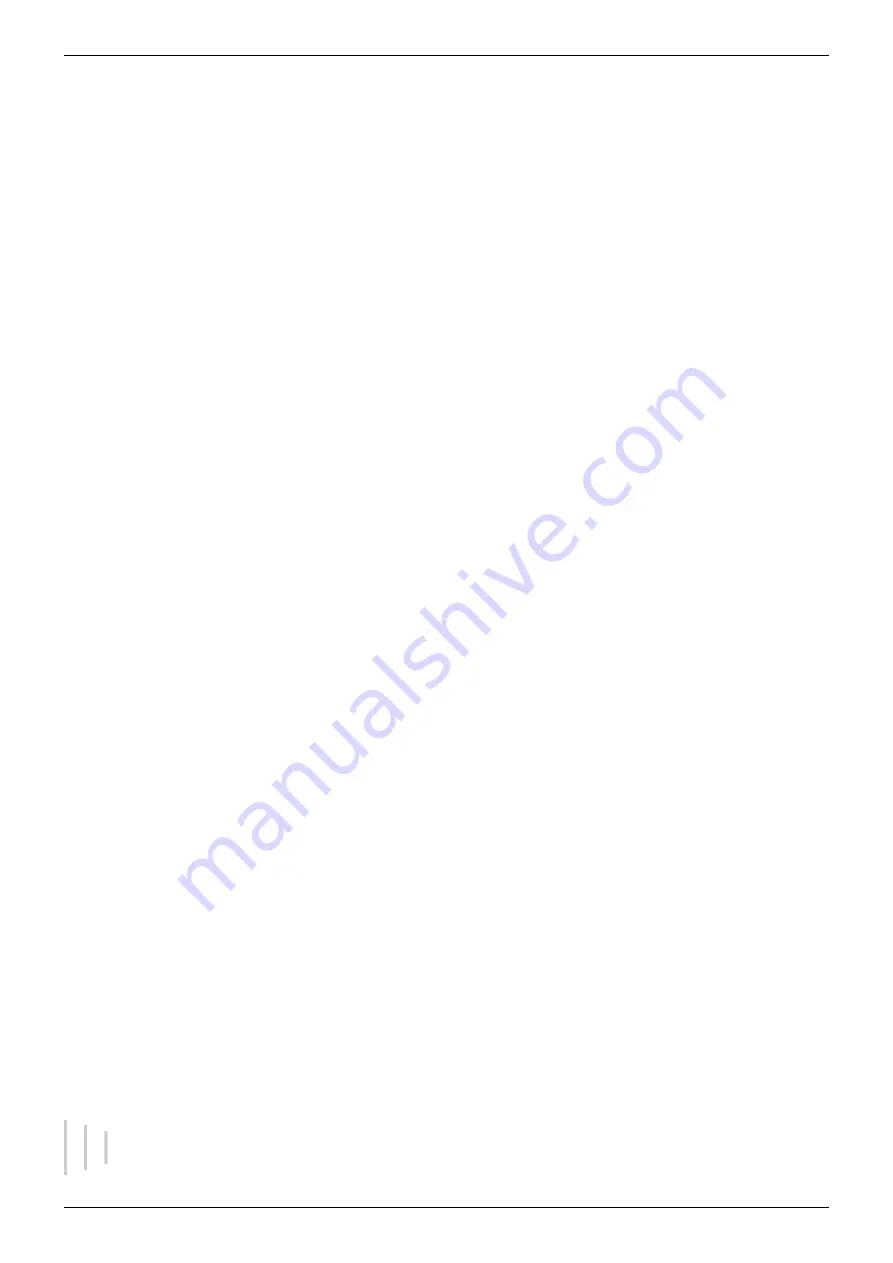
2019/10/22 16:44
19/76
MIDIbox SEQ V4 Beginner's Guide
MIDIbox - http://wiki.midibox.org/
(For effects, see section 6.6.)
3.1.9. Roll gate (RollG)
RollG trigger layer is used together with Roll and Roll2 parameter layers. This trigger is not assigned
to any trigger layer by default. You can assign it to one of the available trigger layers on the TRIGGER
page (MENU + TRIGGER), but normally you don't need it. See section 3.2.4.1. for details on how and
when to use RollG.
3.2 Parameter layers
A parameter layer always has a value between 0 and 127. It can be in plain numerical form (0–127) or
it may appear as a combination of letters and numbers, like e.g. for notes and roll values. The values
can be adjusted with the GP knobs below each step.
The parameter layer to be edited is selected with the parameter layer selection buttons (lower left
corner of the front panel). Button A selects the first parameter layer (which is a note layer in a newly
initialised Note type track), button B selects the second parameter layer, and button C brings up a
menu where you can choose any available parameter layer with the GP buttons. (Or, if you have only
four parameter layers, button C alternates between the 3rd and the 4th layer.)
Note that all steps will have Note, Velocity, CC etc. values in them by default, but they are effective
only if the gate trigger is set 'on'. On the EDIT page, the active parameter layer name can be seen in
the left LCD. “PA: Note” means “Parameter layer A: Note”, i.e. the first (= A) note layer is active, “PB:
Vel.” means the Velocity layer is active, etc.
3.2.1. Note
Note layers contain the notes which the sequencer is going to play. If you have several note layers,
you can use them to play several notes at once, e.g. for chords. (See section 4.)
Note that the note layers are not independent of each other, because each track has only one gate
trigger layer which is shared by all the note layers of the track. Hence, it is not possible to have each
note layer play their own line, each layer having its own gate, length etc. Multiple note layers are
useful for playing multi-note chords in each step, but e.g. piano-style two-handed play with some
notes held down longer in one note layer, while other notes play “broken chord” arpeggios in another
note layer is not possible with just one track. You would need to dedicate a separate track (perhaps
sending on the same MIDI channel) for each “hand”.
Example: The following will work:






























